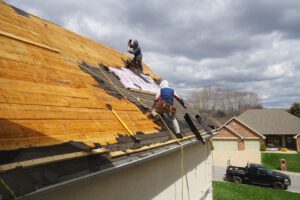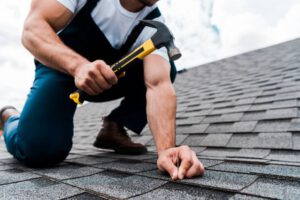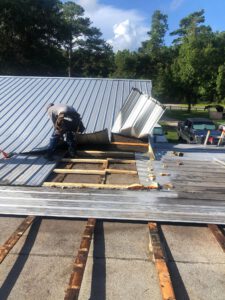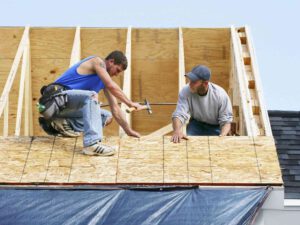Concrete Colorado Springs can be a labor-intensive process. It requires a thorough evaluation of the defect, competence to accomplish the repairs, and the ability to finish the exposed surfaces acceptably.
For example, a concrete sinkhole can be filled with a product like PolyLevel, which fills voids by injecting a foam that compacts the soil. But the underlying issue — poorly compacted soil — must be addressed.
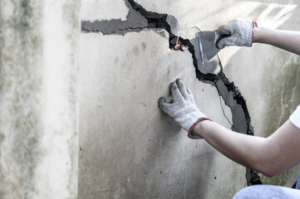
Concrete cracks due to settling, soil instability, poor site preparation, and moisture intrusion can be a serious problem that requires professional concrete repair. Fortunately, there are many ways to remedy the problem and prevent it from worsening.
The first step is to determine the cause and type of cracking. Then, choose the right method to repair the cracks. The factors that need to be taken into account are the width and depth of the cracks, as well as whether or not they affect structural integrity.
Narrow cracks that are less than 1/4 inch wide can be repaired with a basic concrete patching compound. If the crack is wider, it may be necessary to use a foam backer rod to create a base for the concrete patch. This rod can be purchased in a variety of sizes and must be stuffed into the crack to a depth of at least 1/4 inch. Then, the crack can be filled with the patching compound or concrete mix. After the crack is filled, it must be allowed to dry thoroughly before being exposed to traffic or water.
Wider cracks that extend through the entire thickness of the concrete can be repaired using a specialized concrete repair product. This product is available in a variety of formulations, such as epoxy compounds and latex patching materials. These products must be injected into the cracks to provide a seal. This process is usually performed by a professional concrete repair company and can be costly.
It is also possible to fill in cracks in concrete by chiselling out the affected area. This creates a larger surface area and allows the crack repair material to better adhere to the concrete. Then, a concrete patching compound or mortar mix is applied over the chiseled area. This method is often used for surface-level repairs and will not prevent the cracks from reappearing if the underlying problem is not addressed.
Some cracks in concrete can be fixed by injecting a polyurethane injection paste into the cracks. This is a quick and cost-effective way to fix minor cracks in concrete, but it is not recommended for repairing heaving or expansive cracks. In these cases, it is best to call in a professional to assess the situation and apply other appropriate repair methods.
Leaks in concrete can cause serious damage to the foundation of a home. They can also create favorable conditions for the growth of mold and mildew, which can cause a wide variety of health issues. They can also weaken the concrete slab itself, causing it to crack or even break down completely. This is why it’s important to address the problem early. Fortunately, there are several ways to fix these problems.
The simplest way is to re-route the plumbing above ground. This will prevent water from accumulating under the slab, which can lead to flooding and other problems. However, this can be a costly and time-consuming solution.
Another option is to use a special type of material that fills the gap in the concrete slab and seals it. The material is called polyurethane and it works by reacting with the water in the pipes to form a thick foam. This foam seals the gaps and cracks in the concrete and will prevent water from leaking through them.
This method is less expensive than other options, but it’s not the best choice for all situations. It may not be possible to reroute the plumbing without damaging other parts of the house, and it’s also difficult to find a leak under tons of concrete.
Slab leaks are a common problem that can be caused by many factors. One possibility is that the copper pipes are corroding from contact with other metals in the soil. This can occur either because of the heat from the water or because of the natural acidity of the soil. Another possible reason is that the soil is shifting, which can weaken and crack the plumbing lines underneath the slab.
These leaks are very difficult to repair because they can go undetected for a long time. Eventually, they will cause significant water damage to the inside of the house. There are a few different ways to deal with these issues, but the most effective is usually to hire a professional plumber to dig into the concrete and locate the leak.
Concrete repair focuses on filling cracks, patching small holes, and fixing surface wear. It is typically done with a mixture of aggregate (stones), water, and cement. The exact ratio of each varies depending on the type of concrete being repaired. Concrete repair materials must be carefully selected and applied to ensure they provide the desired durability, strength, abrasion resistance, and long-term weatherability. They also need to be compatible with the existing concrete material and any underlying soil conditions.
Structural damage can result from environmental factors or construction errors. Concrete structures need to be evaluated by a registered professional engineer to classify and assess the severity of the damage. Major structural problems may include significant floor or wall movement, extensive cracking, misalignment, expansive soil conditions, and structural support system failures.
It is often cheaper and faster to repair damage rather than replace it. Repairing damaged concrete can also extend the lifespan of the structure. It can help to eliminate safety hazards, such as tripping and falling, and protect against pest infestations. It can also improve the aesthetics of a property, making it more appealing to potential buyers.
There are a variety of methods for concrete repair, including injection, epoxy resins, and PolyLevel. PolyLevel is a noninvasive concrete repair solution that uses a two-part polyurethane polymer to fill voids and lift concrete slabs back to their original position. It is injected through pencil eraser-sized ports and expands to create a stable, structural foam that compacts the surrounding soil. This method is quick, effective, noninvasive, aesthetically pleasing, and does not retain moisture.
The best way to determine the proper concrete repair method is to consult a professional concrete contractor. They will have the expertise and equipment to evaluate the structure, determine the appropriate repair method, and guide preventative maintenance. They can also offer warranty and insurance for their work. The benefits of hiring a concrete repair professional include the ability to save time, money, and labor, as well as the use of high-quality materials to ensure a durable and long-lasting repair. In addition, professional contractors have the necessary safety equipment for large projects and repairs in high places.
Using proper preparation in concrete repair is essential to the life of your structure. Whether you are filling in a small crack or replacing the entire surface of a large slab, careful preparation will help to ensure that the new material is bonded properly and will not delaminate from the concrete.
The first step in repairing concrete is cleaning the damaged area. A pressure washer can be used to remove ingrained dirt and expose imperfections. The concrete should then be acid etched to improve adhesion and allow the replacement material to bond with it. The use of chemical cleaners such as detergents, tri-sodium phosphate or solvents is not recommended because they may carry the contaminant deeper into the concrete.
Once the surface of the concrete has been cleaned, all defective and unsound concrete must be removed. This can be done by saw cutting the perimeter of the repair zone and breaking out or removing concrete from the center. Once all deteriorated concrete has been removed, certified shoring must be used to support the remaining structure.
It is also important to understand the limitations of any particular repair system and the factors that can influence its performance. For example, if you are repairing a concrete structure that has been subject to freezing and thawing cycles, you will need to consider the coefficient of thermal expansion. This is because if the replacement material experiences a greater expansion than the existing concrete, it will cause cracking and debonding of the repair material.
A professional concrete contractor can help you to determine the type of damage to your concrete and select the appropriate repair method. They will also be able to recommend preventative maintenance to reduce the likelihood of future damage.
By following these tips, you can help to extend the life of your concrete structure and avoid costly repairs in the future. Keeping your concrete well-maintained can also protect the environment and the people who use it. Increased concrete repair activities due to durability failure have a direct impact on the environment by contributing to natural resource depletion, CO2 emissions and inert waste production.
